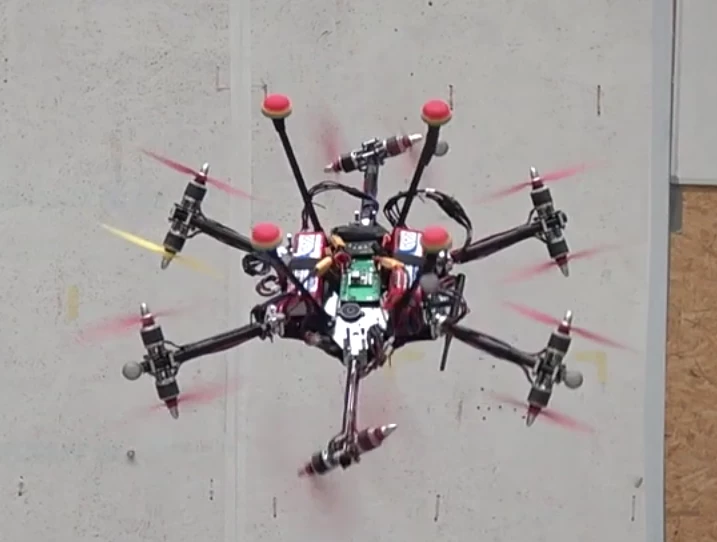Autonomous Systems researchers at ETH Zurich have demonstrated another drone capable of flying and hovering in any orientation, this time with higher efficiency. It's extraordinary to watch its 12 coaxial rotors twisting and turning in flight.
Each pair of rotors is mounted to an arm that's capable of rotating 360 degrees – an advance over the Voliro design we first saw in 2017, whose wired motor connections would twist up if the arms rotated too far. But the results are similar – true omnidirectional flight in an airframe that can hold any orientation at any time. It's interesting to note that while both this device and the Voliro came out of ETH Zurich, only one team member, Voliro CEO Mina Kamel, is involved in both projects.
Why would you want an omnidirectional drone? Well, in some use cases the main benefit is that you can house a camera or other instrument inside the drone rather than lowering it on a gimbal. The drone can fly on its side to get its legs right out of the way. In others, such as asset inspections, it might be pertinent for the drone to hug right up against a vertical surface. In surveillance applications, perhaps this kind of machine could eventually be able to snuggle up to a wall, grab on with a suction device and switch its rotors off for silent, battery-efficient operation.

One special use case this particular drone handles better than others is its ability to fly while attached to a cable, and use its exceptional aerial mobility to avoid tying itself up in knots or exposing the cable to the moving blades.
Watching this thing balance and roll in mid-air, it's tough not to think you're looking at the early prototype of some kind of flying Robocop that humanity will need to deal with in bulk in the coming decades. With omnidirectional vision and the ability to very quickly place itself just about anywhere in 3D space, it's sure going to be hard to avoid.
Check out some flight test video below.
Source: arXiv via IEEE Spectrum





